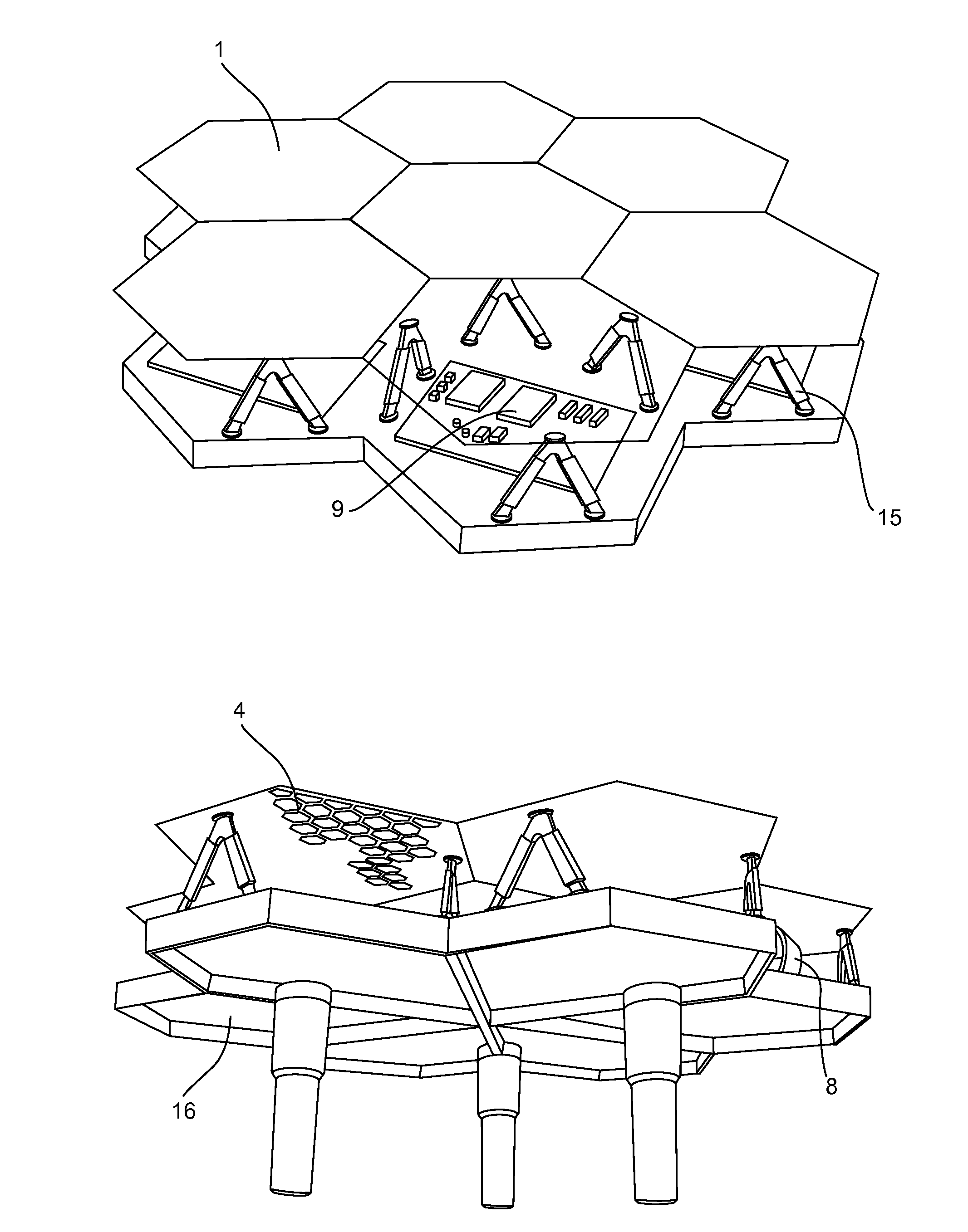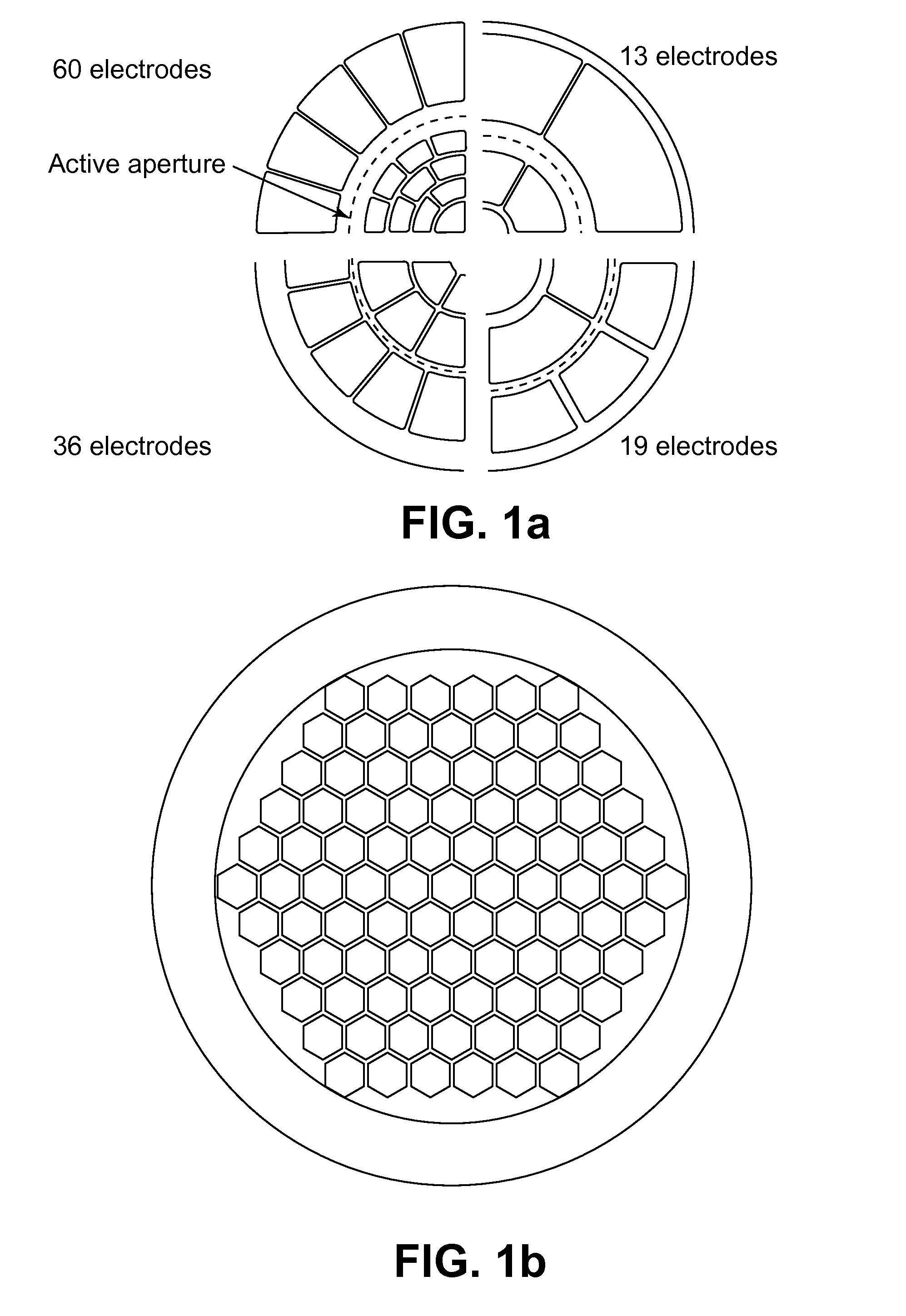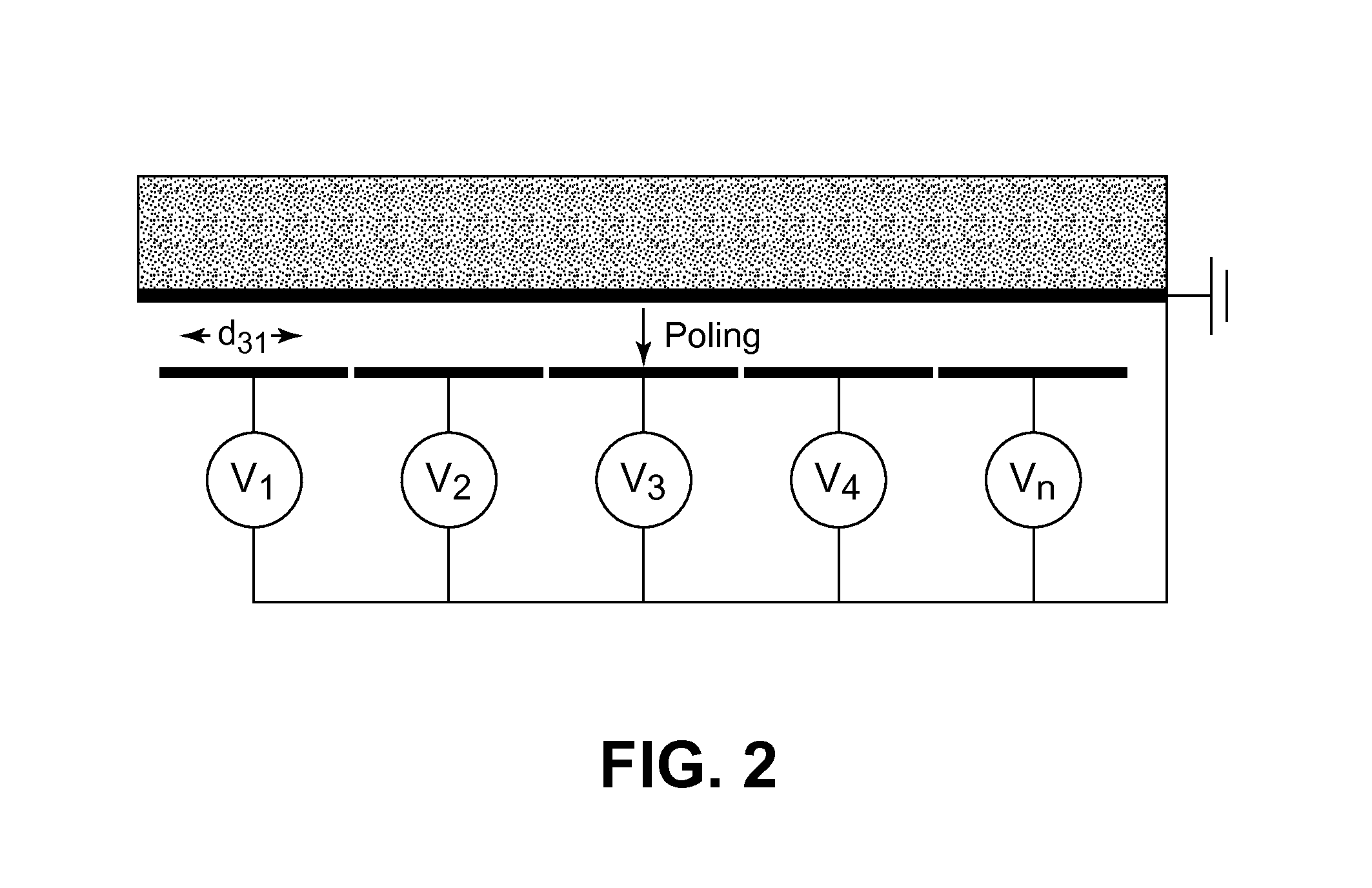Deformable mirror
a mirror and deformation technology, applied in the field of space telescopes, large terrestrial telescopes and adaptive optics, can solve the problems of inability to transport via the present road or rail network, inability to meet the needs of machining of segments at different positions, and difficulty in achieving the effect of reducing the number of mirrors
- Summary
- Abstract
- Description
- Claims
- Application Information
AI Technical Summary
Problems solved by technology
Method used
Image
Examples
first embodiment
[0044] the coarse curvature is obtained by selecting the materials of the different components (reflective substrate, dielectric layer, horizontal actuators and mass electrode) to have differential thermoelastic distortions. When changing from the temperature of deposition to the temperature of operation, the different layers will undergo differential thermo-elastic distortions resulting in the desired curvature at the temperature of operation.
second embodiment
[0045] the dielectric layer 6 may be a shape memory polymer layer, as illustrated in FIG. 5. Also, a shape memory polymer layer 20 may be applied in contact with the dielectric layer. The shape memory polymer induces the required curvature following a phase change induced by appropriate heating or cooling.
third embodiment
[0046] a metallic coating 21 is applied on the front surface of the reflective substrate, as illustrated in FIG. 6. In this case, the metal layer's surface becomes the reflective surface of the mirror unit. The metal layer can be for example a gold, silver or aluminium layer. In this embodiment, the ‘reflecting substrate’ is formed by the combination substrate / metal layer. The material of the substrate on which the metal layer is deposited may thus be other than a reflecting material. The metal layer introduces a pre-stress on the substrate, resulting in the coarse curvature deformation. Also, the metal may be chosen to obtain a curvature as consequence of differential thermo-elastic distortions (in relation to the deposition temperature) between the metal layer and other components of the unit.
PUM
| Property | Measurement | Unit |
|---|---|---|
| Thickness | aaaaa | aaaaa |
| Flexibility | aaaaa | aaaaa |
| Shape memory effect | aaaaa | aaaaa |
Abstract
Description
Claims
Application Information
 Login to View More
Login to View More - R&D
- Intellectual Property
- Life Sciences
- Materials
- Tech Scout
- Unparalleled Data Quality
- Higher Quality Content
- 60% Fewer Hallucinations
Browse by: Latest US Patents, China's latest patents, Technical Efficacy Thesaurus, Application Domain, Technology Topic, Popular Technical Reports.
© 2025 PatSnap. All rights reserved.Legal|Privacy policy|Modern Slavery Act Transparency Statement|Sitemap|About US| Contact US: help@patsnap.com



